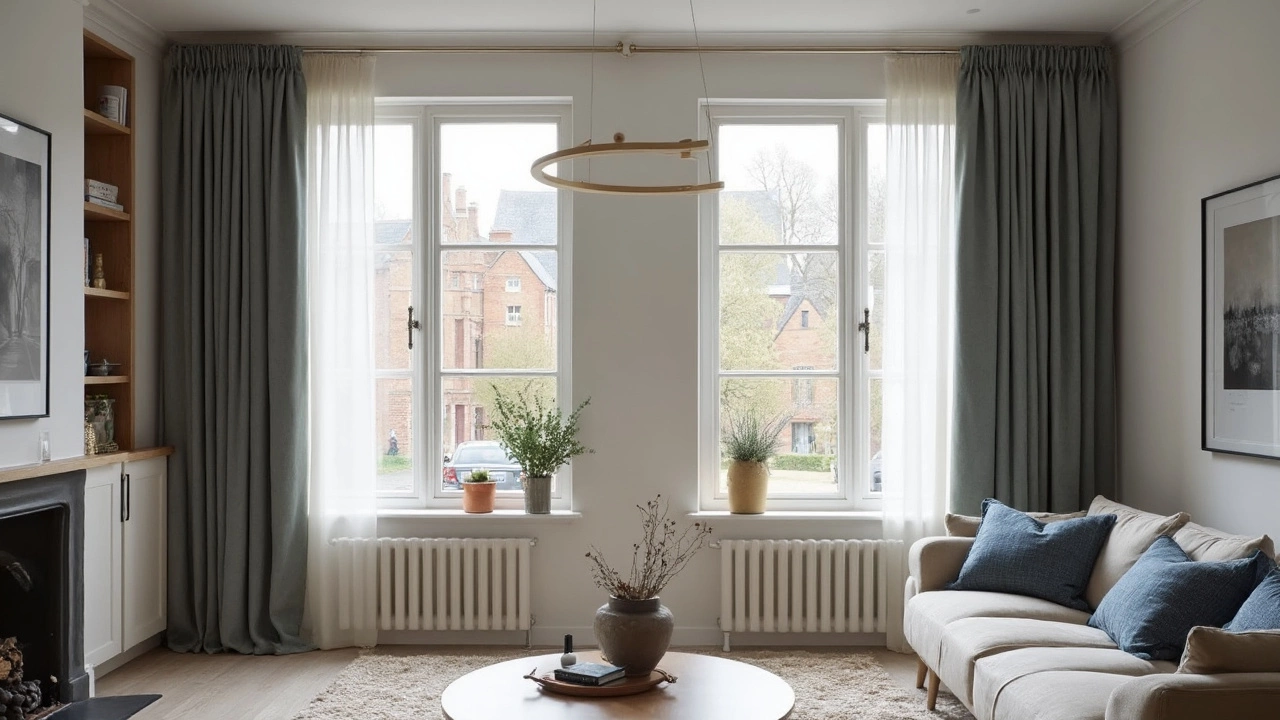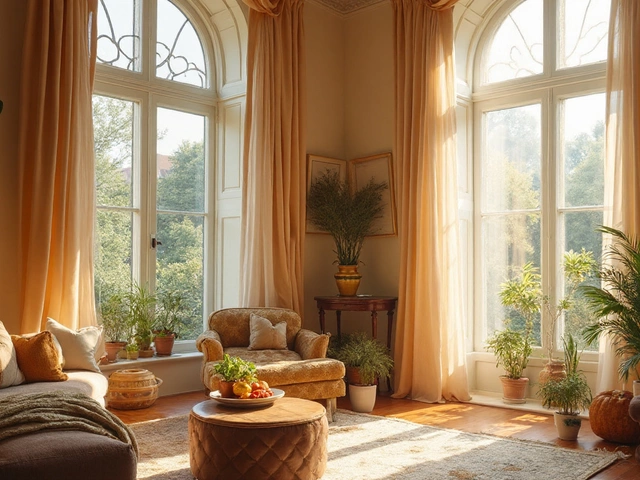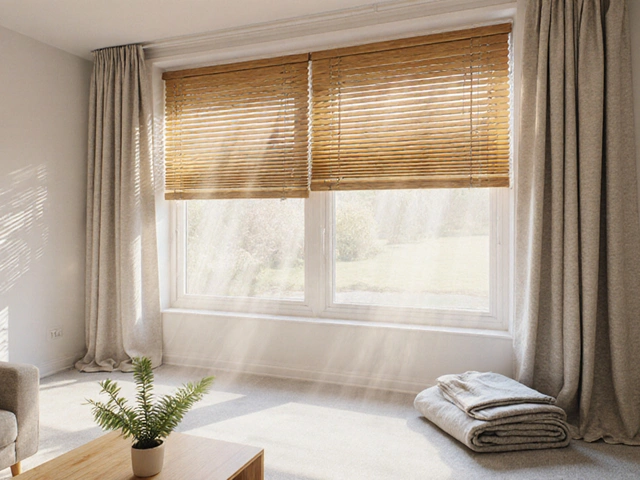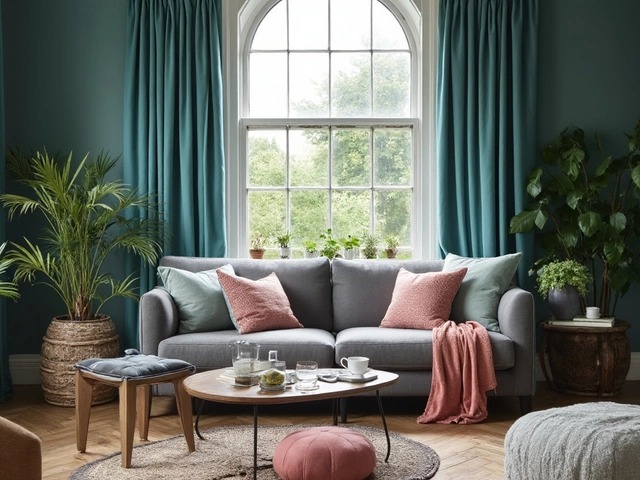Ever stood there in your living room, curtain rod in hand, debating whether it should go at the ceiling or just above the window? You're not alone. This simple choice can totally flip the mood of your space. Go high, and you might just find your rooms feeling more open and airier. Keep them low, and you might get a snugger vibe, perfect for those cozy movie nights.
But it’s not just about these feels. Hanging curtains higher can really create this cool optical illusion that makes your walls look taller, which is awesome if you're working with a small area or lower ceilings. It’s like a neat magic trick for your space!
- Decoding the Decor Dilemma
- The Illusion of Height
- Space and Light: Getting It Right
- Types of Rooms and Windows
- Practical Considerations
- Tips to Nail the Look
Decoding the Decor Dilemma
Alright, so you're stuck in this curtain conundrum: should they go up high near the ceiling or just chill above the window? This isn't just a question of taste but also a practical decision that can affect your entire room vibe.
Let's break it down. Hanging curtains at ceiling height can make your space look taller and more grand. This trick works wonders in rooms with low ceilings, as it draws the eye upward, giving that elegant and airy feel. It's like giving your space a facelift without renovation.
On the flip side, when you hang them right above the window, you might get a more traditional or structured look. This can frame your window neatly and suit rooms where you want to focus attention specifically on the window.
But which is better? There's no universal answer. Think about the purpose of the room and your personal preferences. If you're aiming for a formal setting, high and wide curtain placement can add that touch of sophistication. If coziness is your jam, then keeping them at window level might be your best bet.
Also, consider the type of window you've got. Tall, narrow windows often benefit from ceiling-high curtains to accentuate their height. Meanwhile, wide or short windows might look balanced and neat with curtains just above them. The key is to complement—not compete—with your window's natural size and shape.
Here’s a quick tip: Want to experiment before committing? Use painter's tape to mock up where you think your curtain rod should go. It’s low-cost and low-stress, helping you visualize the final look.
The Illusion of Height
Ever notice how some rooms feel way taller than they really are? It's like they've got this invisible high ceiling vibe. Well, hanging your curtains closer to the ceiling can totally give you that effect. This trick is all about drawing the eyes upward.
When you mount the curtain rod as close to the ceiling as possible, it elongates your walls. Those extra inches might seem small but can make a world of difference, especially in tighter spaces. Architectural Digest did a whole piece on this, and they say,
"Raising your curtains from the usual window height up to the ceiling can really stretch the room vertically, giving an elegant touch without much effort."
And here's the magic of it: you create not just the illusion of height, but a more spacious feel overall. This is especially fab for older homes with lower ceilings. It's like putting your room on invisible stilts!
Now, if you're wondering how far from the ceiling you should hang that curtain rod, a good rule of thumb is about 4 to 6 inches below the ceiling line. If you've got detailed molding up there, you might want to consider just beneath it, so it doesn’t get lost in the decor shuffle.
Choosing longer curtains that puddle slightly at the floor can add even more grandeur, not to mention a touch of drama. So, when thinking 'height,' it's not just the curtain's starting point that matters—but how it ends, too!
Space and Light: Getting It Right
Alright, so let’s talk about how curtains can seriously mess with the vibe of your room if they're not hung right. Getting that balance between space and light is key—and where you hang those bad boys plays a big role in it.
If you hang your drapes close to the ceiling, you'll get more natural light bouncing into the room. This can make even the smallest spaces look larger. Imagine a tiny studio apartment suddenly feeling like it’s got a whole extra foot of height just because of where your curtains hang. Magic, right?
Now, here’s the deal: natural light is your BFF in making the room feel open and welcoming. When curtains go all the way to the ceiling, they can be pulled back wider, allowing more light to shine in. If you’re worried about privacy or glare, opt for sheers that filter light but keep prying eyes out.
On the flip side, placing curtains just above the window might suit some rooms better, especially if you’re aiming for a cozier, snug look. It manages to give a more classic vibe that can be great for, say, a den or a reading nook.
- For a modern, airy feel: Push curtain rods up high, as close to the ceiling as possible.
- For a traditional look: Stick to window height, which gives a homely vibe.
A quick tip: If you’ve got windows on different walls, hang the curtains at the same height for some extra visual harmony in your space.
Consider the light: Too much sunlight? Go for thicker materials or add a blackout liner in bedrooms. Need more light in darker areas? Choose lighter fabrics or sheers. Easy peasy.
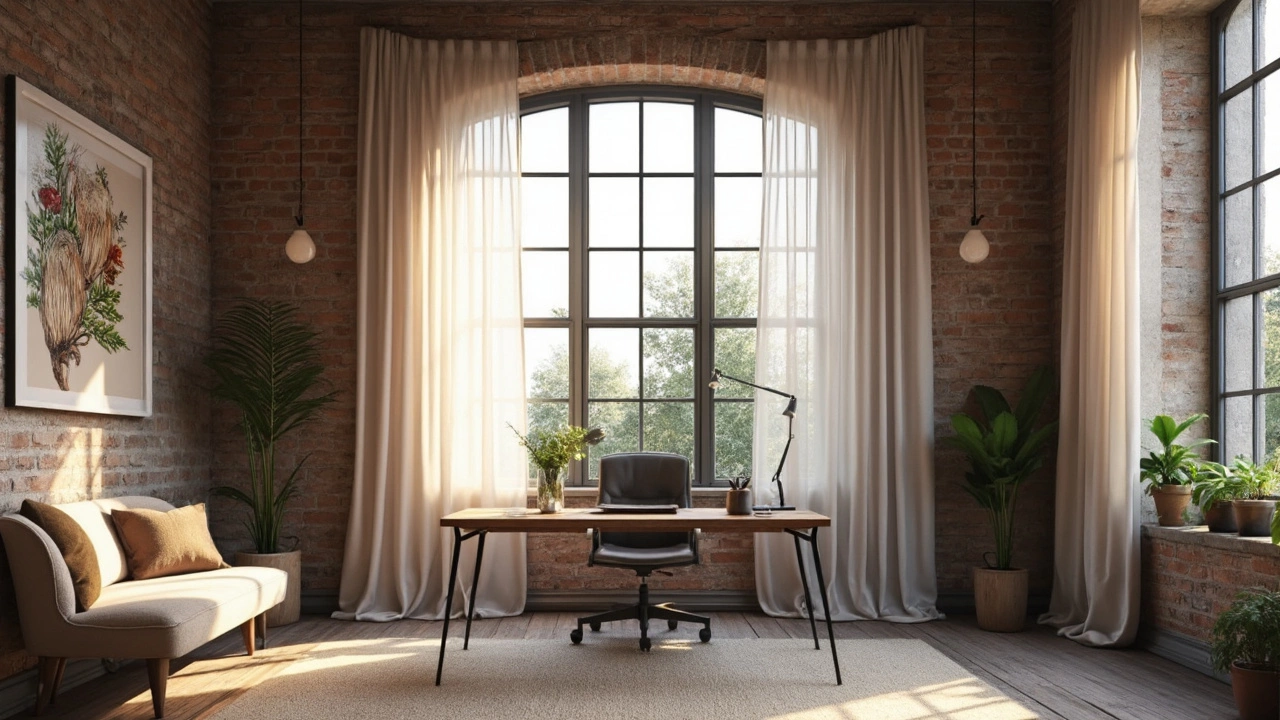
Types of Rooms and Windows
When it comes to hanging curtains, the room you’re working on plays a big role in the decision. Living areas and bedrooms often benefit from curtains that reach the ceiling, giving a sense of elegance and making the space feel more expansive. On the flip side, smaller rooms or functional spaces like home offices or kitchens might work better with curtains hung closer to the window. This keeps things neat and doesn’t overwhelm the room.
Different types of windows can also sway your curtain-hanging decision. Large, expansive windows, like those floor-to-ceiling type ones, are just begging for curtains hung high. It enhances their drama and keeps things balanced. For those classic windows that sit up high on the wall, hanging curtains at window height saves you the awkwardness of a curtain that seems too long for its purpose.
Got bay windows or something uniquely shaped? Adaptation is key! For bay windows, ceiling-mounted curtains add a touch of sophistication while encasing the nook cozily. Meanwhile, oddly shaped windows—or those with unexpected features—may require custom solutions. It’s about working with the room's quirks to highlight its charm.
One thing’s for sure—matching curtain height to your room and window type can completely transform a space. You’re blending function with style, finding what feels right for each unique area. It's like getting the perfect haircut that suits your face shape, really.
Practical Considerations
When you're caught up in deciding between ceiling-height or window-height curtains, keep the practical aspects in mind. First off, think about curtain length. If your windows are particularly tall, going all the way to the ceiling could mean you need custom curtains, which might be a bit pricier. On the other hand, opting for ceiling-height curtains in a room with standard windows might make it easier to find ready-made options.
Next, let's talk about installation. Ceiling-mounted curtains can be more challenging to set up, especially if you're not a fan of ladders. You'll also want to check if your ceiling can handle the installation. Most curtain rods need a sturdy base, so if you have a plaster ceiling, you might need some additional supports.
Maintenance is another point to consider. Ceiling-high curtains can be harder to take down for cleaning compared to those hung lower. If you're someone who likes to keep things clean, this could be a deciding factor. Not to mention, reaching the top of those higher curtains might require help or some extra long arms!
Finally, think about light and temperature control. Curtains hung close to the ceiling can help to insulate your windows better, keeping rooms warmer in winter and cooler in summer. This setup might also block light more effectively, which is perfect for those who love room-darkening vibes for longer sleep-ins.
- Determine the ideal curtain length for your space.
- Consider ease of installation and if you need additional tools.
- Think about cleaning and maintenance routines.
- Assess the impact on light control and room temperature.
Balancing these practical factors with the aesthetic you want goes a long way in making a choice that you'll love living with day in and day out.
Tips to Nail the Look
Want your curtains to look just right? Here are some handy tips to help you get there. First off, if you're aiming for that dramatic effect, hang your curtains closer to the ceiling. Not only does this make your room feel taller, but it also gives a more polished and cohesive look.
Now, let’s talk widths. Always aim for your curtains to be wide enough to cover about one and a half to two times the width of your window. This will ensure they don't look skimpy and can fully close if you need to block off light or for privacy.
- Length matters: Some love curtains brushing the floor for that snuggly vibe, while others prefer them just a tad above for easy cleaning and a bit of airflow underneath.
- Fabric choice: Light, sheer fabrics let loads of daylight stream in, ideal for living spaces. But in a bedroom, thicker materials might be better to block out morning sun.
- Color and pattern: While soft neutrals blend well, bold colors or playful patterns can turn your drapes into a statement piece.
- Hardware counts: Use sturdy rods that can handle the weight of your chosen fabric. Plus, stylish curtain rods can add a chic touch to your room decor.
Fancy a quick trick? When picking the height for your rods, remember that higher usually means a touch of elegance, amplifying that sense of space. Lastly, trust your instincts and go with what feels right. After all, they're your curtains, and your taste is what matters most at the end of the day.
